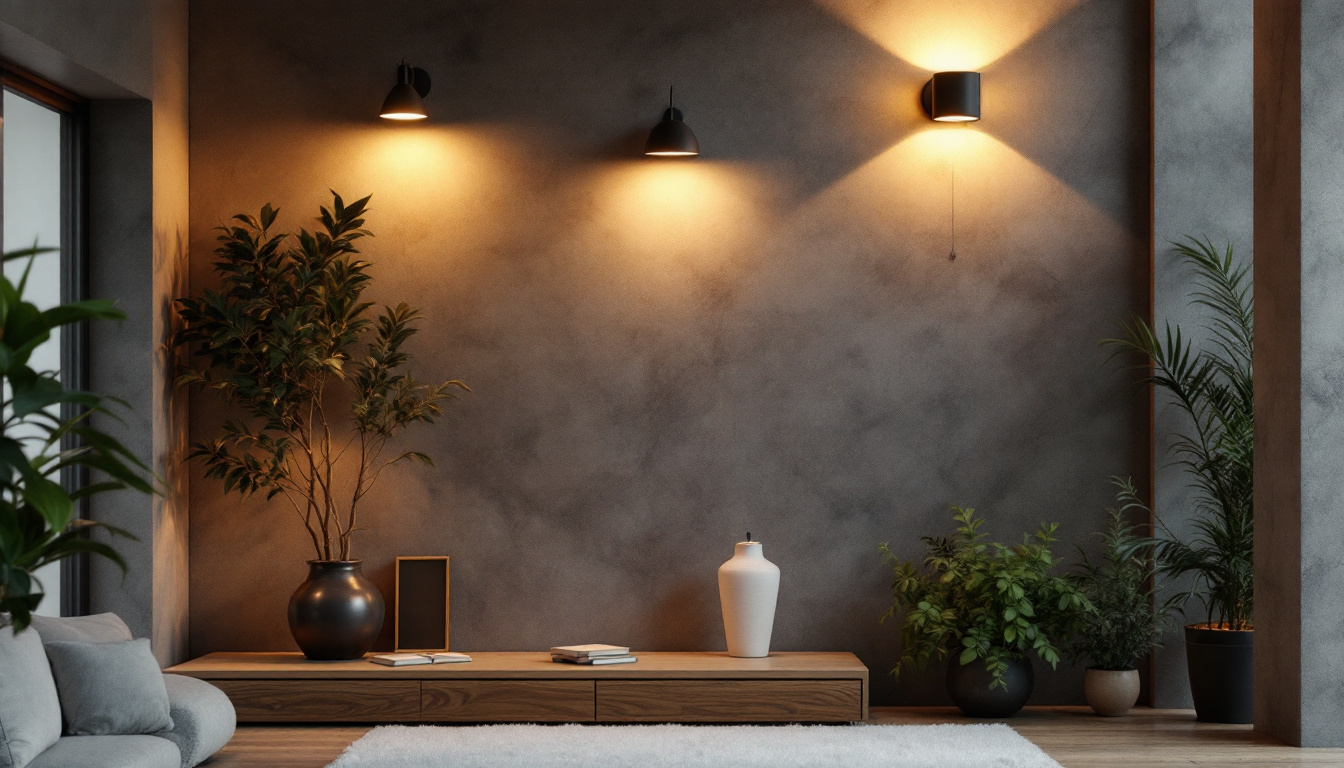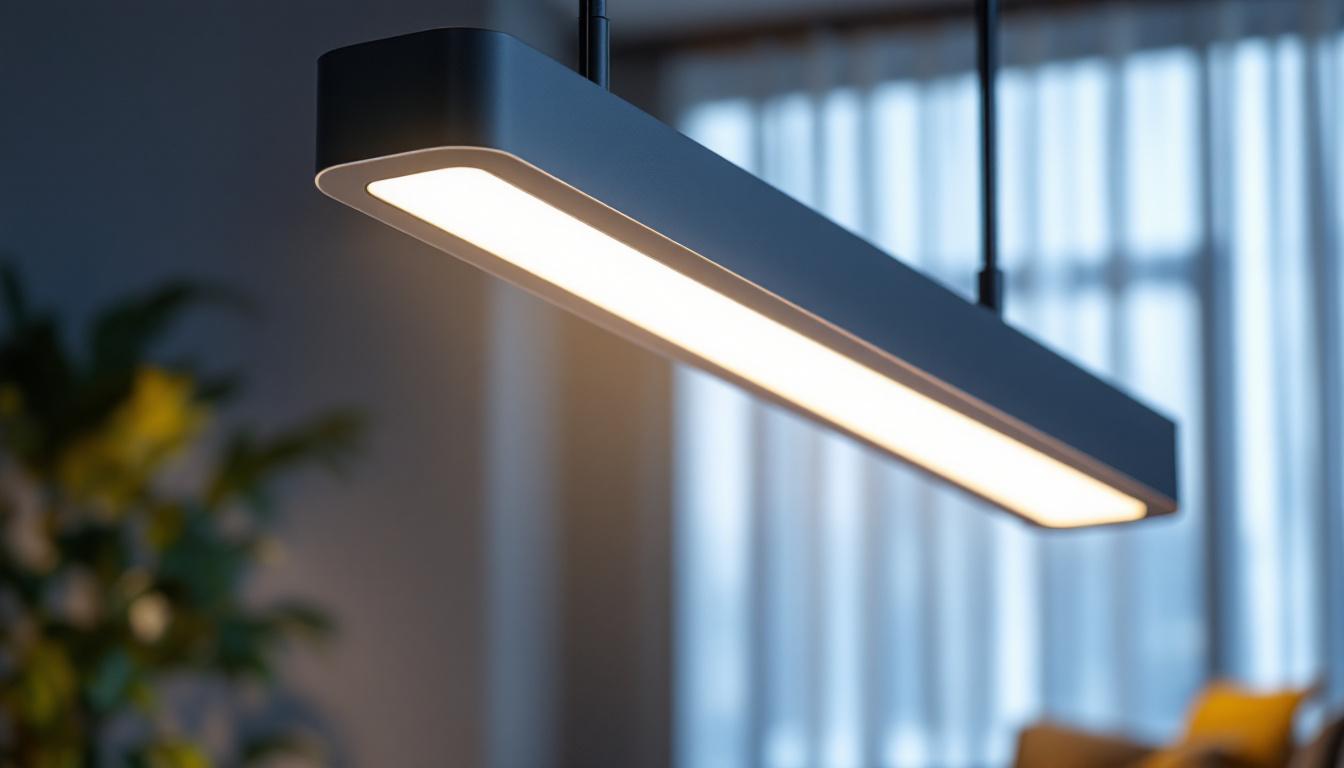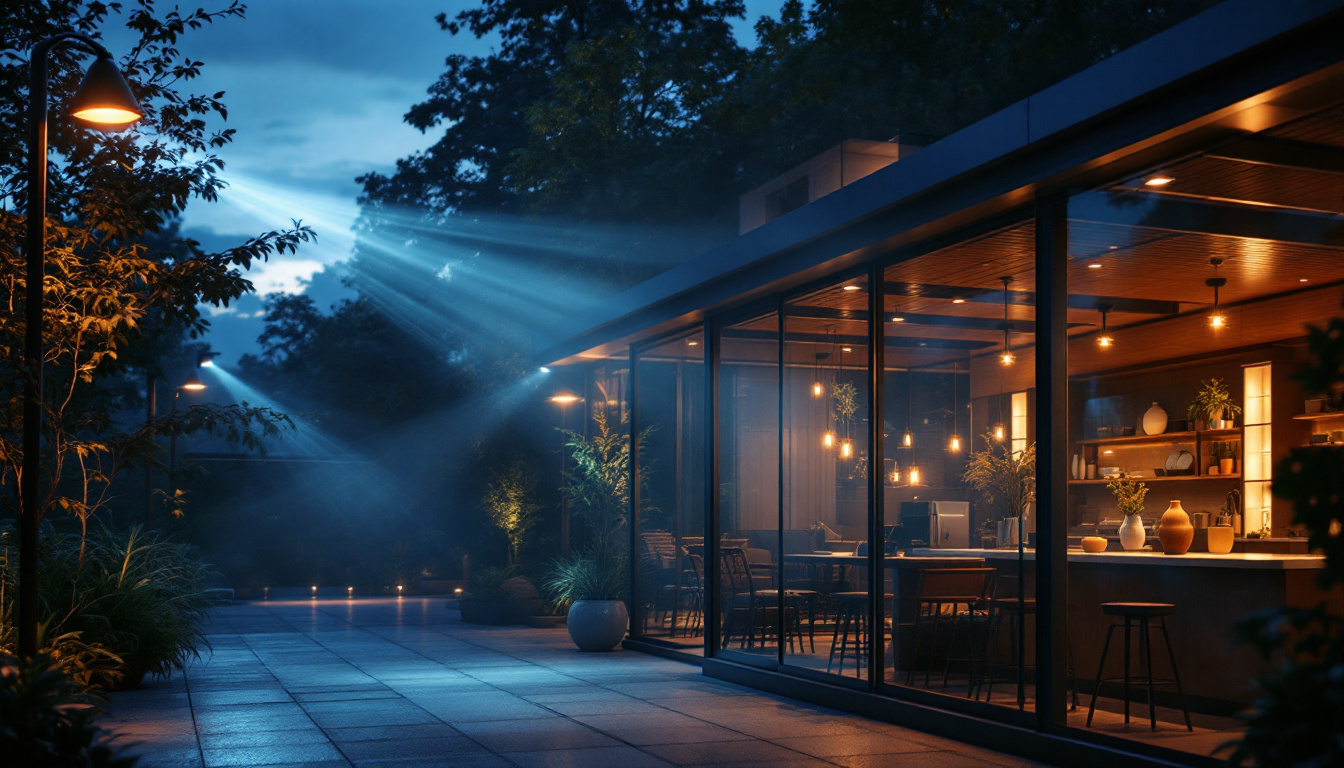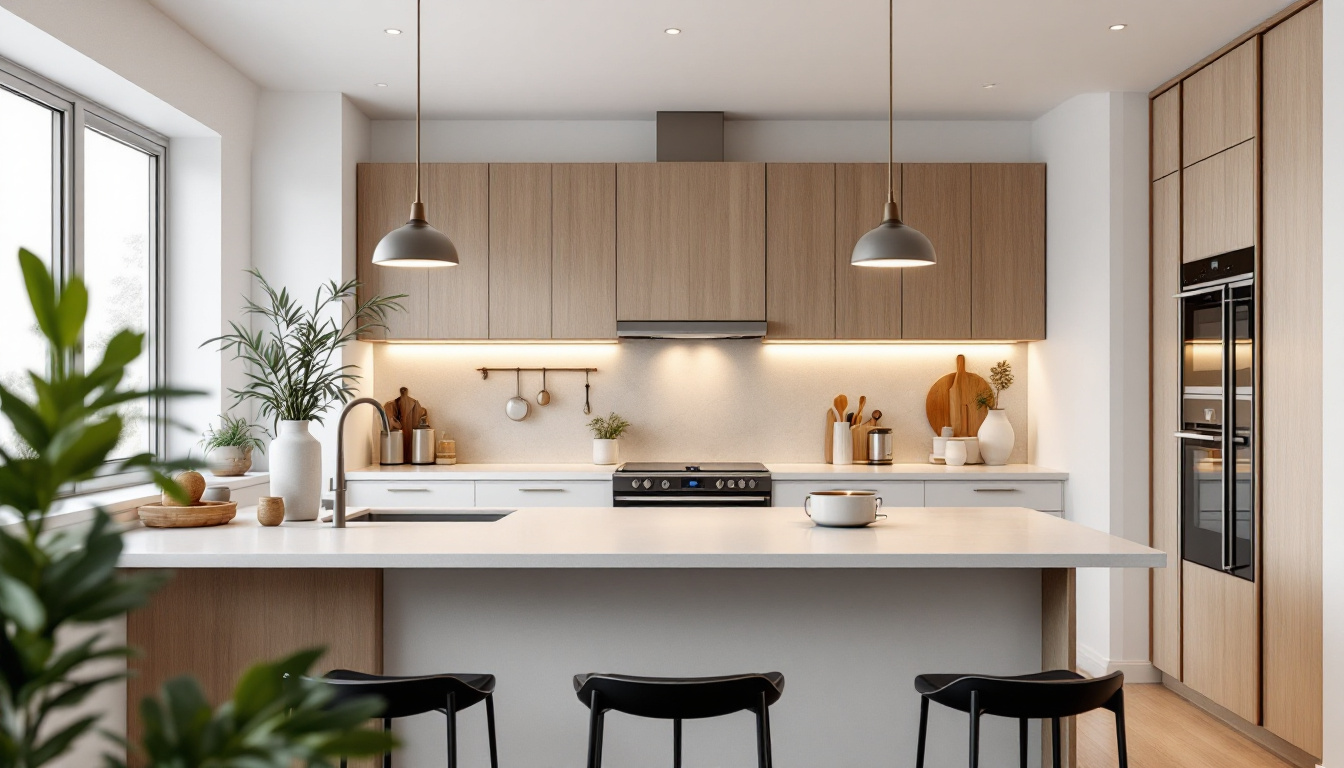
Interior wall lights play a crucial role in enhancing the ambiance of a space while providing functional illumination. As lighting contractors delve into the intricacies of design and installation, understanding the various aspects of wall lighting becomes essential. This article gathers insights from industry experts, offering valuable information on types, placement, and design considerations for interior wall lights.
When it comes to interior wall lighting, there are several types to consider, each serving unique purposes and aesthetic goals. From sconces to picture lights, the options are vast, and selecting the right type can significantly impact the overall design of a room.
wall sconces are perhaps the most popular choice for interior wall lighting. These fixtures can be mounted at various heights and often come in a variety of styles, from traditional to modern. They provide both ambient and task lighting, making them versatile for different settings.
In residential spaces, sconces can be used to highlight artwork, provide light in hallways, or create a cozy atmosphere in living areas. Their ability to direct light upwards or downwards allows for creative lighting designs that enhance the architectural features of a room. Additionally, many sconces now come with adjustable arms or dimming capabilities, allowing homeowners to customize the intensity of the light based on the time of day or the desired mood.
For those looking to showcase artwork or photographs, picture lights are an ideal solution. These fixtures are designed to illuminate specific areas, drawing attention to the pieces they highlight. Proper placement is critical; typically, picture lights should be mounted above the artwork to create an even wash of light.
In addition to their aesthetic benefits, picture lights can also enhance the viewing experience by providing the right amount of illumination without causing glare or harsh shadows. This makes them a favorite among galleries and homeowners alike. Furthermore, picture lights come in various styles and finishes, allowing them to blend seamlessly with the decor while ensuring that the art remains the focal point of the room. Some models even feature LED technology, which offers energy efficiency and longevity, making them a smart choice for the environmentally conscious consumer.
Accent lighting serves to highlight specific features within a room, such as architectural details, sculptures, or decorative elements. Wall-mounted accent lights can create focal points, adding depth and interest to a space.
Contractors often recommend using accent lighting in conjunction with other lighting types to achieve a balanced illumination scheme. By layering different light sources, the overall effect is both functional and visually appealing. For instance, combining accent lights with ambient lighting can create a dynamic atmosphere that shifts throughout the day. Moreover, the strategic placement of accent lights can also help to visually expand smaller spaces, making them feel larger and more inviting. This versatility is why accent lighting is a staple in both residential and commercial design, providing an opportunity to express personal style while enhancing the overall functionality of a room.
The placement of wall lights is a critical factor that can influence the effectiveness of the lighting scheme. Proper positioning ensures that the light serves its intended purpose while enhancing the overall design of the room.
Determining the correct height for wall lights is essential for both aesthetics and functionality. Generally, wall sconces should be installed at eye level, which typically ranges from 60 to 66 inches from the floor. This height allows for optimal illumination without creating harsh shadows or glare.
For spaces with multiple sconces, maintaining consistent alignment is crucial. Whether they are placed symmetrically on either side of a piece of furniture or evenly spaced along a hallway, alignment contributes to a cohesive look.
Spacing between wall lights can significantly affect the overall lighting effect. In areas such as hallways or staircases, lights should be spaced evenly to provide consistent illumination. For larger walls, grouping sconces in pairs or clusters can create a more dynamic visual interest.
When grouping lights, consider the scale of the wall and the surrounding decor. A well-thought-out arrangement can enhance the architectural features of the space while providing adequate lighting.
Identifying functional areas within a room is vital for effective wall light placement. For instance, in a living room, wall sconces can be positioned near seating areas to provide additional task lighting for reading or other activities. In dining areas, wall lights can create an inviting atmosphere, enhancing the overall dining experience.
In bathrooms, wall lights should be placed near mirrors to ensure adequate illumination for grooming tasks. Understanding the specific needs of each space will guide contractors in making informed decisions about wall light placement.
The design of wall lights should harmonize with the overall aesthetic of the space. From materials to styles, each element contributes to the final look and feel of the environment.
Wall lights come in a wide range of materials, including metal, glass, and ceramic. The choice of material can influence not only the appearance but also the quality of light emitted. For instance, glass fixtures often provide a softer glow, while metal fixtures can create a more focused beam.
Contractors should consider the surrounding decor when selecting materials. A modern space may benefit from sleek metal fixtures, while a more traditional setting might call for ornate glass sconces. The right material can enhance the overall design and ensure that the lighting complements the existing elements in the room.
The style of wall lights should align with the overall theme of the interior design. Whether the space is contemporary, rustic, or eclectic, there are wall lighting options to match. For example, minimalist designs work well in modern settings, while vintage-inspired fixtures can add character to traditional spaces.
Incorporating unique styles can also serve as a statement piece within the room. Lighting fixtures can be both functional and artistic, contributing to the overall decor while providing necessary illumination.
The color temperature of wall lights can dramatically affect the mood of a space. Warmer tones (around 2700K) create a cozy and inviting atmosphere, ideal for living rooms and bedrooms. Conversely, cooler tones (above 4000K) are often used in workspaces or kitchens, where bright, clear light is essential for tasks.
Lighting contractors should consider the intended use of each space when recommending color temperatures. By selecting the appropriate hue, the overall ambiance can be tailored to enhance the functionality and aesthetic appeal of the room.
In today’s environmentally conscious world, energy efficiency is a significant consideration in lighting design. As technology advances, more options for energy-efficient wall lights have become available, allowing contractors to offer sustainable solutions to their clients.
LED wall lights are among the most energy-efficient options on the market. They consume significantly less energy than traditional incandescent bulbs while providing the same level of brightness. Additionally, LEDs have a longer lifespan, reducing the need for frequent replacements.
Contractors should educate clients on the benefits of LED lighting, including lower energy bills and reduced environmental impact. By promoting LED options, contractors can position themselves as forward-thinking professionals who prioritize sustainability.
The rise of smart home technology has also influenced wall lighting design. Smart wall lights can be controlled remotely, allowing users to adjust brightness, color, and even scheduling through their smartphones or voice-activated devices.
Integrating smart lighting solutions into wall fixtures not only enhances convenience but also promotes energy savings. By enabling users to turn off lights when not in use or adjust settings based on natural light levels, smart technology can contribute to a more sustainable lifestyle.
Proper installation of wall lights is crucial for ensuring safety and functionality. Lighting contractors must adhere to best practices to deliver high-quality results that meet client expectations.
Before installation, it is essential to assess the existing wiring and electrical systems. Contractors should ensure that the electrical capacity can support the chosen wall lights, especially if multiple fixtures are being installed in one area.
Following local building codes and regulations is paramount. Proper wiring techniques not only ensure safety but also enhance the performance of the lighting fixtures. If necessary, consulting with a licensed electrician can help address any electrical concerns before installation.
Once installed, testing the wall lights is crucial to ensure they function as intended. Adjustments may be necessary to achieve the desired lighting effect. This may involve repositioning fixtures or changing the angle of adjustable sconces to optimize illumination.
Encouraging clients to provide feedback during this phase can lead to a more satisfactory outcome. A collaborative approach allows contractors to make necessary adjustments that align with the client’s vision.
Educating clients on the maintenance of wall lights can prolong their lifespan and ensure optimal performance. Simple tasks, such as dusting fixtures regularly and replacing bulbs as needed, can make a significant difference in the longevity of the lighting.
Contractors may also recommend specific cleaning products or techniques based on the materials used in the fixtures. Providing clients with a maintenance guide can enhance their overall experience and satisfaction with the installation.
Interior wall lights are more than mere functional fixtures; they are integral to the overall design and ambiance of a space. By understanding the various types of wall lights, placement considerations, design elements, and installation best practices, lighting contractors can elevate their projects to new heights.
As the industry evolves, staying informed about energy-efficient solutions and smart technology will position contractors as leaders in the field. Ultimately, the goal is to create spaces that are not only beautifully illuminated but also tailored to the unique needs and preferences of each client.
Ready to bring your lighting designs to life with the best in spec-grade lighting? Look no further than LumenWholesale. Our commitment to quality and affordability ensures that you have access to a vast array of interior wall lights and other lighting products that meet the highest industry standards. Say goodbye to inflated markups and hello to unbeatable wholesale prices, free shipping, and the convenience of bulk buying. Elevate your lighting projects with confidence and cost-effectiveness. Discover the perfect blend of quality, affordability, and convenience by visiting Wholesale Lighting at the Best Value today.

Discover how the 4600 4 is revolutionizing the lighting industry with its innovative technology and energy efficiency.

Discover essential insights into flood lights with our comprehensive guide tailored for lighting contractors.

Discover the ultimate guide to flush mount kitchen lights tailored for lighting contractors.

Explore the transformative role of modern lighting solutions in greenhouses, enhancing plant growth and sustainability.